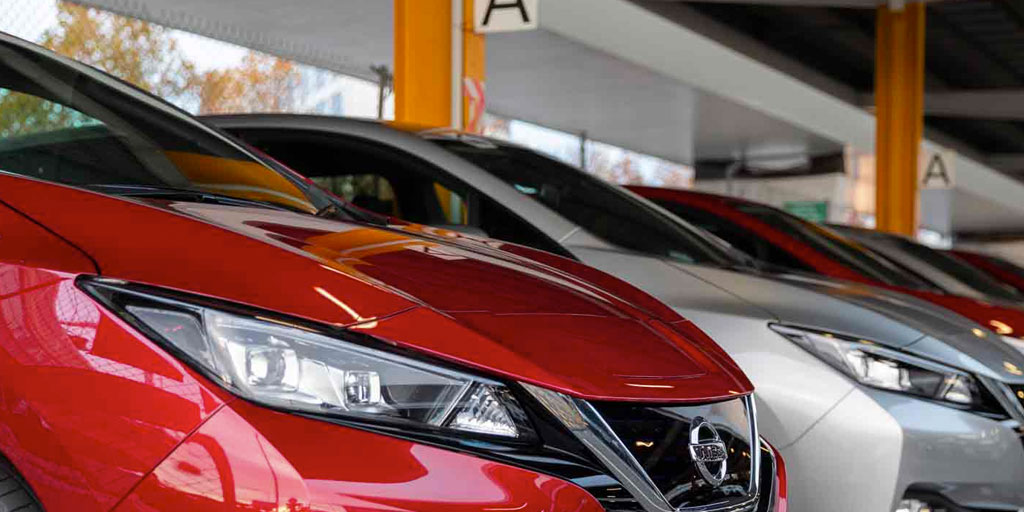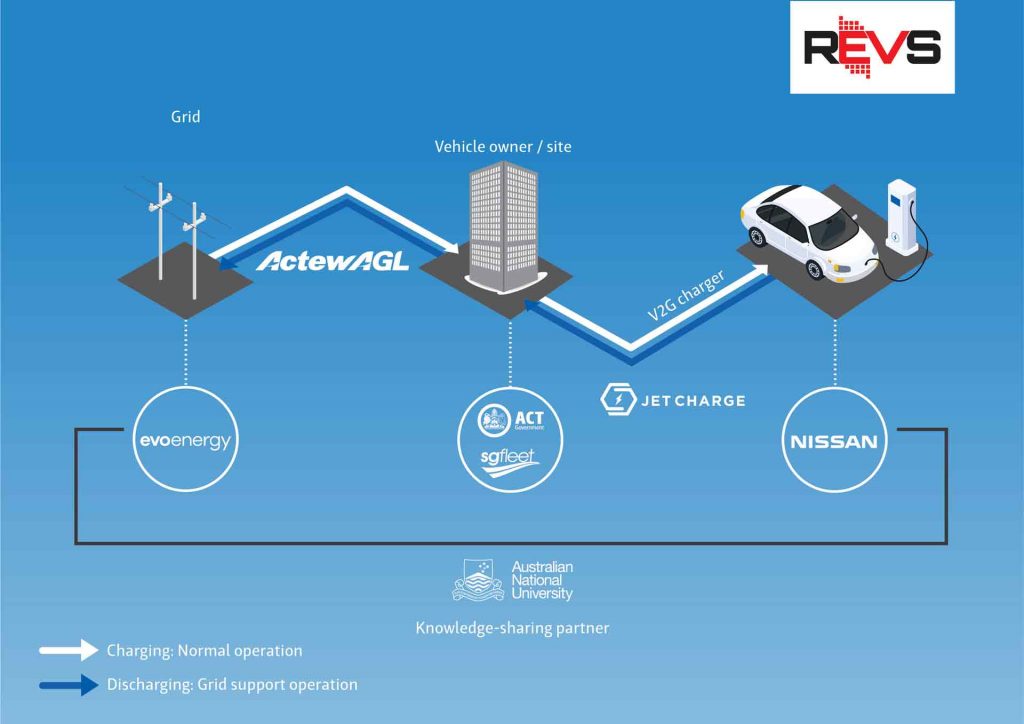‘Batteries on wheels’ roll in for Canberra storage trial
Could your next car also power your home and help to stabilise the electricity grid?

ARENA has announced funding for an ACT power company ActewAGL to show that a fleet of electric vehicles can provide similar grid services to big batteries and virtual power plants.
The Canberra Realising Electric Vehicle-to-Grid Services (REVS) trial will become one of the world’s largest vehicle-to-grid demonstrations, deploying 50 new EVs in the ACT Government fleet and one in ActewAGL’s own fleet.
The trial will use the second generation Nissan Leaf, which became the first electric vehicle available in Australian to be equipped with bidirectional charging capability when it launched locally in mid-2019. Like all production EVs, it can be charged from mains power or rooftop solar, but is unique in its ability to send electricity back to the electricity network.

ActewAGL will use the cars 40 kWh batteries to provide backup power and discharge electricity to the grid, store excess renewable energy and provide services that help to stabilise the network.
The Australian National University is partnering on the project to demonstrate that the vehicle-to-grid concept can work at scale in the real world. ANU research lead Dr Bjorn Sturmberg says the ultra-fast reactions of EV batteries make them well-suited to balancing the grid.
“One EV battery typically contains as much energy as an average household uses over two-to-four days and can react to events in a tenth of a second,” Stumberg explained.
“If all of Australia’s 19 million vehicles were electric, they would store more energy than nine Snowy 2.0s, or over 20,000 Tesla Big Batteries.”
The trial will mark the first time electric vehicles have supplied FCAS to the National Electricity Market, and if successful could provide a new way to fine tune the frequency of the grid to maintain stability and prevent blackouts.
Grid services could make EVs more affordable
The fleet of EVs will largely be used during business hours for work-related trips around the ACT and plugged in when not on the road, which ActewAGL expects will make them available for approximately 70 per cent of the time to provide grid services.
ActewAGL’s Group Manager of Product and Strategic Energy Deployments, Todd Eagles, said that the electricity and transport industries are making important contributions to the Realising Electric Vehicle-to-Grid Services project.
“It’s a powerful collective of stakeholders invested in supporting the uptake of renewables through vehicle-to-grid capabilities, which have an important role to play in ensuring the resilience and reliability of our energy system,” Mr Eagles said.
The consortium includes the Australian National University, JET Charge, Evoenergy, SG Fleet, the ACT Government and Nissan.

“Owners of electric vehicles can also benefit from financial incentives as a result of their electric vehicles being able to facilitate the two-way flow of energy, thereby reducing their overall vehicle costs. By focussing on fleets in the first instance, which make up around half of all new cars purchased in Australia, we’ll demonstrate the ability to scale these capabilities for shared value across the energy system and for vehicle owners,” he said.
IS BIG REALLY BETTER WHEN IT COMES TO BATTERIES? GRID VERSUS GARAGE
ARENA is supporting the project through its focus on integrating renewable energy into the electricity system, which has already provided funding to a range of energy storage technologies. ARENA CEO Darren Miller said ActewAGL’s trial is an important first step in demonstrating how EVs can support the grid.
“ARENA is focused on commercialising technologies than can aid the integration of EVs into the electricity system. Given its potential capability to provide similar services as household batteries, V2G has the opportunity to transform a vehicle into a revenue generating device for consumers, through access to energy and network service markets and also to provide power solutions for the grid,’ Mr Miller said.
As well as supporting the rollout of the Chargefox and Evie national ultra fast charging networks along highway routes between major cities, ARENA has provided funding for Melbourne startup AEV Robotics to develop an automated self-charging EV prototype.
“With EV uptake continuing to grow, this project will help to unlock a future where EVs are just as critical a piece of the electricity sector as the transport sector,” he said.
Alongside the vehicle-to-grid demonstration, ANU will produce a vehicle-to-grid roadmap for Australia that outlines the potential of the technology and possible steps to achieve it.
Tune into our podcast Rewired for more EV info
Earlier this year ARENA explored Australia’s electric vehicle opportunities in our podcast, Rewired. With more models available than ever before and predictions that prices will reach parity with petrol powered cars by the mid-2020s, electric vehicles are slowly breaking into the mainstream.
In this episode we asked some of Australia’s — and the world’s — most switched on energy minds whether our electricity network is ready for an influx of EVs, and whether we should be excited about the opportunities they offer.
LIKE THIS STORY? SIGN UP TO OUR NEWSLETTER

ARENA